Email Marketing
The History of Email: Digging Into the Past, Present, and Future

Email Marketing

Email history is a long and winding road that covers more than a half-century of electronic communication. And believe it or not – there are quite a few interesting backstories surrounding the origins of email.
Whether you’re here because you’re a curious email geek, or you’re trying to write a paper about the history of email, we’ve plenty to explore. From the birth of email technology through its evolution and all the way up to the future of email – let’s dig into the details.
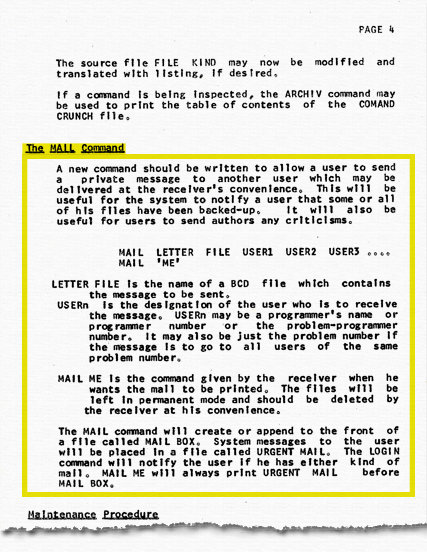
The origins of email can be traced to the Massachusetts Institute of Technology (MIT) and the early days of computing. Back when computers were the size of entire rooms, everybody had to share. It’s strange to think about because our mobile devices let us carry more computing power around in our pockets. But in the 1960s, computer nerds engineers had to sign up for time to work and shared the machine with others.
Noel Morris and Tom Van Vleck were working at MIT in 1965 when they noticed a memo mentioning the idea of creating a mail command. The two looked into it and found no one had taken on the job yet. What they developed was a way to leave messages between people sharing computers. For example, you could let a colleague know their files had been backed up.
Noel Morris was the brother of filmmaker Errol Morris who has blogged for the New York Times about Noel and Tom’s contribution to the history of email.
Most people give Ray Tomlinson the title of email’s inventor. He came up with the idea while working for ARPANET, the government-funded research project that eventually became the internet. At the time, you could only leave messages for people using the same computer. Tomlinson created a program that gave users the ability to send messages between connected computers on the ARPANET system.
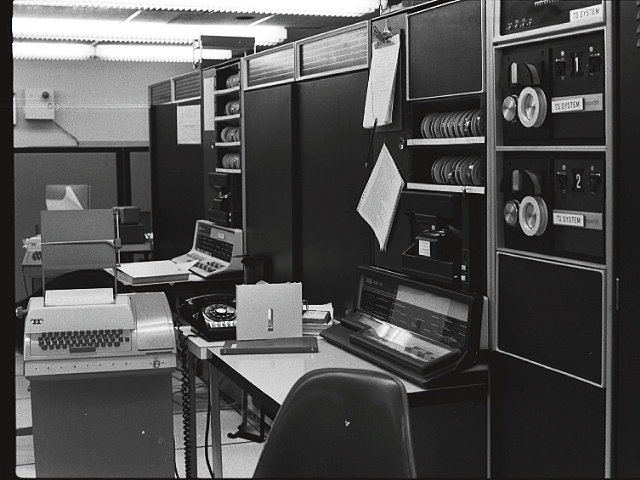

Among Tomlinson’s most notable contributions to email as we know it today is the use of the @ symbol. Tomlinson passed away in 2016, but he lived to see his idea adopted by people all over the world.
In 2012, Tomlinson told his story of the invention of email to The Verge and said people ended up using it just as he envisioned:
ARPANET was very young and looking for problems it could solve. I had an experimental file-transfer protocol, but the real one was still in the works. I didn’t want to wait for that, so I wrote a simple little one for my own use, and glued that onto the SNDMSG program so I could send the mailbox file to another computer, where the receiver’s mailbox was. That was the first networked email in some sense.
There is, however, some serious controversy over who really invented email. We’ll tell you more in a few years…
Queen Elizabeth II was the first head-of-state to use email. She tried out ARPANET’s electronic mail program during a visit to the Royal Signals and Radar Establishment in Malvern, England. They gave her the username HME2 for “Her Majesty Elizabeth II.”
As WIRED magazine put it, the late Queen of England beat all of us to the internet. And, she was still using the latest technology to communicate before she passed away in in 2022.
A Virtual Audience with The Queen.
— The Royal Family (@RoyalFamily) December 4, 2020
🇭🇺 His Excellency Dr. Ferenc Kumin, Ambassador from Hungary, and his wife Mrs Kumin, were received by Her Majesty via video link at Windsor Castle. pic.twitter.com/XuTdaBJIbZ
(Your Majesty? I think you’re on mute.)
Also in 1976, Jimmy Carter’s presidential campaign was the first to use email to communicate. Although, the former president steered clear of it later in life because he thought someone was spying on his conversations with foreign leaders.
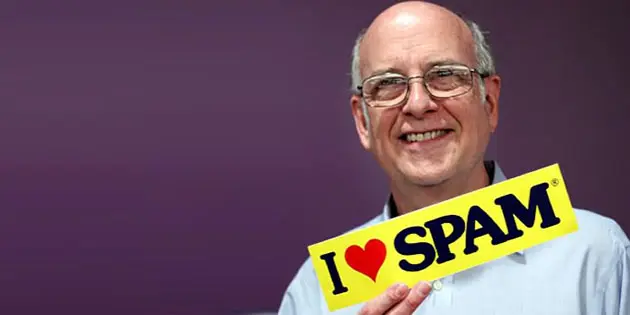
It didn’t take long for someone to find a way to use email to make money. Gary Thuerk earned the title “father of spam” after sending an unsolicited marketing message to hundreds of ARPANET users in 1978.
He was promoting a new product for Digital Equipment Corporation. Thuerk claims the email earned $13 million in sales. That sounds like pretty good engagement and a strong conversion rate. And email still gets incredible ROI. So, you have to wonder… With that kind of success, was this truly spam or the beginning of email marketing?
While Gary Thuerk seems to embrace his spammy title, he told Computing World in 2007 that he prefers to think of himself as the “father of e-marketing.” He also doesn’t think we should blame him for spam.
If the airline loses your luggage, do you blame the Wright Brothers?

The same year that Gary Thuerk started sending spam promotional messages, a teenager with an entrepreneurial drive was redefining workplace communications. V.A. Shiva Ayyadurai says a program he created as a 14-year-old is the true first version of email. Ayyadurai built his interoffice software program for the University of Medicine and Dentistry of New Jersey. He called it “EMAIL.”
Up until this point, people were still calling those messages electronic mail. So, it’s quite likely that Ayyadurai helped coin and popularize the term “email.”
Ayyadurai believes earlier electronic messaging solutions were more akin to text messaging than what we know today as email. His system digitized the physical inboxes and outboxes for workplace memos. That’s where terms like CC (carbon copy) come from. Despite plenty of backlash and controversy, Ayyadurai insists the title “inventor of email” is rightfully his – and he’s even got the domain (inventorofemail.com) that says so.
Ayyadurai went on to earn four degrees from MIT, founded tech companies, married Fran Drescher for a couple of years, and got involved in politics. More recently, he tried to get Elon Musk to hire him as the CEO of Twitter.
Simple Mail Transfer Protocol (SMTP) standardized the way mail servers send and receive messages. It’s partly based on the SNDMSG program that Tomlinson created at ARPANET. SMTP is what email clients use to send messages to mail servers and on to the recipients.
The late Jon Postel (known as the “god of the internet”) co-authored RFC 772, the precursor to SMTP ,with Suzanne Sluizer in 1980. Postel would later publish RFC 788 for SMTP as a way to replace File Transfer Protocol (FTP) for delivering emails.
Of course, SMTP has issues – namely security and a way to verify the identity of a sender. In the early ’80s, relatively few computers were connected to the early internet. The people using them knew each other and trusted other users. Suzanne Sluizer explained this to CNET in 2004 and actually suggested a new protocol was needed.
Back in the time we were doing this work, we were talking about hundreds or maybe thousands of sites on what was then called the ARPANET … It was a trusted situation, and the protocols were developed on the basis of that trust. So it’s very surprising to me that we are using the same protocols coming up on 25 years later, because you need different things in a commercial environment than you need in a research environment.
Rather than getting rid of SMTP, email authentication protocols were introduced. That includes Sender Policy Framework (SPF) and Domain-keys Identified Mail (DKIM). These authentication protocols help mailbox providers identify sending and help to stop email spoofing.
Other email sending protocols include the Internet Message Access Protocol (IMAP) and the Post Office Protocol (POP), which would emerge in the mid ‘80s.
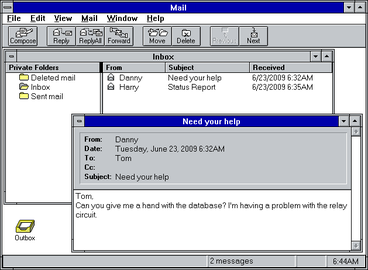
Towards the end of the ’80s, Microsoft released its first commercially available email product, MSMail. There were versions for both Macintosh and PC computers. It was seen as the predecessor for the Exchange and Outlook products.
Microsoft has been causing headaches for email developers ever since. Troubles creating emails for Outlook is one of the main reasons to use email testing and previews for quality assurance.
Elwood Edwards’ voice likely helped the masses get hooked on checking email. He’s the guy behind AOL’s “You’ve Got Mail” notification. It was probably one of the earliest ways to get a dopamine hit online. At the time, Edwards was working in broadcasting and his wife worked at AOL. She asked him to record a few lines, which he did on a cassette tape in his living room.
While he didn’t get rich from the recording, he’s received plenty of attention. His phrase inspired a movie with Tom Hanks and Meg Ryan for crying out loud. In 2016, Edwards was driving for Uber. Occasionally, people still recognize that unmistakable voice.
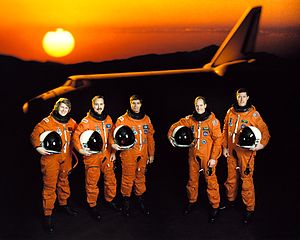
Email went galactic in the early ‘90s. That’s when the crew of the Atlantis Shuttle used a Macintosh Portable to send the first email from space. The message read:
Hello Earth! Greetings from the STS-43 Crew. This is the first AppleLink from space. Having a GREAT time, wish you were here,…send cryo and RCS! Hasta la vista, baby,…we’ll be back!
The crew was all about Apple products on this mission. According to Cult of Mac, the astronauts were also fitted with WristMacs, which were predecessors to today’s Apple Watch.
Multipurpose Internet Mail Extension (MIME) made email much more flexible, supporting text in character sets other than ASCII. It also made it possible to include multimedia attachments such as images, audio, and videos.
Formatting emails without knowledge of code became a reality thanks to CompuServe. The early internet service provider (ISP) introduced a WYSIWYG editor for email and online forums that allowed different fonts, colors, and emoticons. Of course, emojis in email are used all the time now, including as a way to make subject lines stand out in the inbox.
The history of email moved so quickly, it’s easy to forget that, for quite some time, you had to send and receive email on a specific software program. Phillip Hallam-Baker, a cyber-security expert working for CERN developed the first version of webmail. But his version was only a test and never got released to the public. That happened in 1995 when Lotus released cc:Mail, the first commercially available web-based email program.
Of course, the idea of being able to access your email from any computer with an internet connection would take off quickly. ISPs began bundling webmail into their offerings in the mid-’90s. Hotmail and RocketMail, the latter of which became Yahoo! Mail, were the first free webmail services.
Did you know the name Hotmail was chosen because it contained the letters HTML? That was supposed to showcase that it was designed for use on the web. The original hotmail logo even emphasized those letters.

One of the unfortunate side effects of email being an inexpensive way to reach the masses was spam. Unwanted messages that often came from unsavory operations became a prolific problem, and it’s probably the ugliest scar in the history of email. In 1998, spam went into the New Oxford Dictionary along with several other internet terms.
Many believe the origins of calling junk email “spam” can be traced back to a classic Monty Python sketch. In the sketch, patrons of a diner get inundated with annoying chants of spam, which they do not want.
For more about how spam went from being just a weird meat product to the name for unwanted emails, calls, and texts, check out the backstory from Sticky Branding.
Email marketing doesn’t have to be annoying. Groundbreaking digital marketer, Seth Godin, and his agency Yoyodyne believed email could be used effectively and responsibly when you build a list of subscribers who actually want to hear from you. (Imagine that!)
He published a book on this type of strategy called Permission Marketing, which got him kicked out of the Direct Marketing Association, likely because of how much it challenged the status quo. Today, Godin is in the Direct Marketing Hall of Fame. He gave us a few insights for today’s email marketers in our blog post on Permission Marketing.
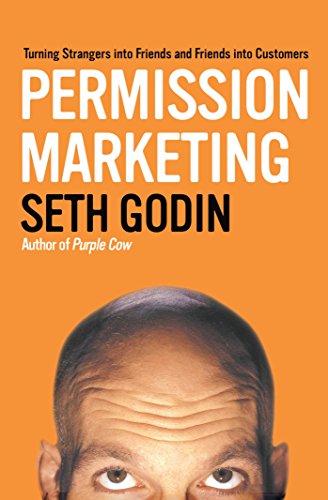
Of course, the idea behind permission-based marketing is that people opt in to receive promotional communications from a brand. It seems so simple now. But 25 years ago, unsolicited email marketing was becoming a huge problem. Not only was it bad for consumers, but it was bad for brands too. Seth would call it “winning the race to the bottom.”
In 2021, Godin told Sinch Email on Acid that the future of email rests on the shoulders of marketers.
Email’s an open API, and that will probably doom it in the long run. But if enough marketers stand up and make it better, not simply louder, there’s a shot … The test is easy: If you didn’t send out your emails tomorrow, would people contact you to find out what happened?
Early adopters of smartphones loved their BlackBerrys. The devices surged in popularity thanks in part to BlackBerry’s focus on mobile email. Released in 2002, the BlackBerry 5810 was the first device marketed as a mobile phone with email capabilities.

Today, mobile email viewing has become the norm. When Sinch surveyed consumers about their email usage habits in 2023, results found more than 71% say they primarily read email on their smartphones. That’s why we highly recommend taking a mobile-first approach to email development so that you deliver responsive email designs.
The United States set standards for regulating commercial email with legislation called Controlling the Assault of Non-Solicited Pornography And Marketing – better knowns as the CAN-SPAM Act. President George W. Bush signed it into law in 2003, 32 years after email’s invention.
Some critics say the law didn’t go far enough. CAN-SPAM makes it a misdemeanor to spoof a “From” field and requires a way for people to opt out. However, the law did not make it illegal to send unsolicited email marketing messages. That prompted some to call it the “You-Can-Spam” act.
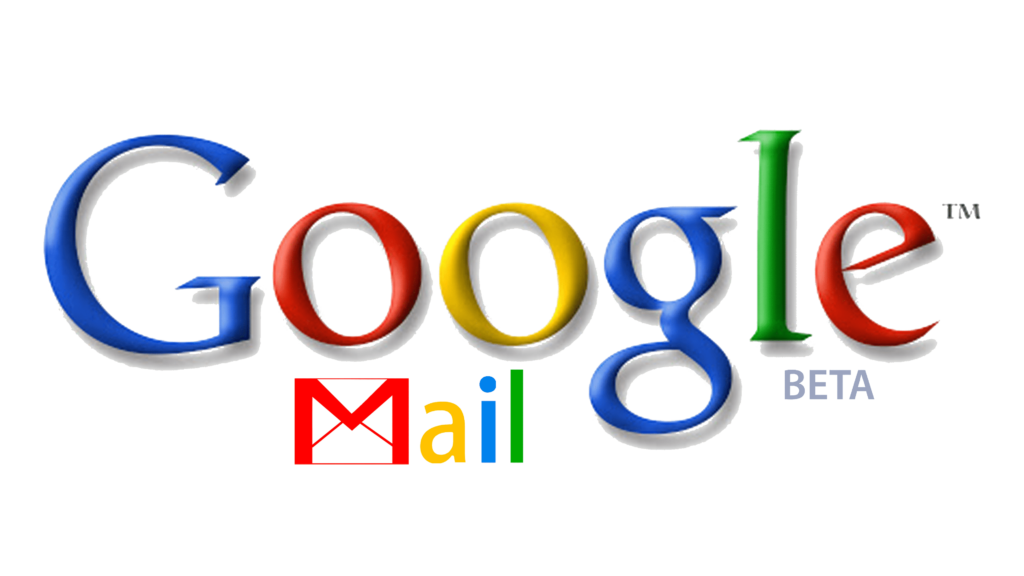
When Google released Gmail in 2004, it raised the bar among webmail competitors. For starters, Gmail offered one whole gigabyte of storage space, which doesn’t sound like much now, but it was way more than normal at the time. Gmail also brought improved search and threaded conversations to webmail. It introduced the tabbed inbox in 2013.
As the story goes, computer engineer Paul Buchhelt (Google employee #25) created his first version of Gmail in just one day. In 2023, there were approximately 1.8 billion active Gmail users. That’s more than 22% of the world’s population.
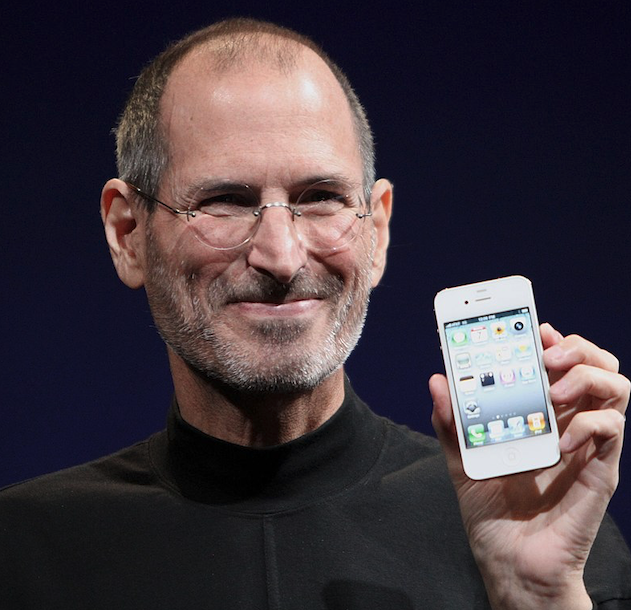
It’s hard to overstate how transformative the introduction of the iPhone was to the digital age. In Apple’s own words it was…
…a revolutionary mobile phone, a widescreen iPod® with touch controls, and a breakthrough Internet communications device with desktop-class email, web browsing, searching and maps—into one small and lightweight handheld device.
Today even grade school kids carry around smartphones. The phrase, “there’s an app for that“, became a meme, and the Apple Mail app is now widely used by many people for viewing emails. As the default email client for iOS and MacOS, it’s often used to “fetch” emails from providers like Gmail and Outlook.
iPhone features a rich HTML email client which fetches your email in the background from most POP3 or IMAP mail services and displays photos and graphics right along with the text. iPhone is fully multi-tasking, so you can be reading a web page while downloading your email in the background.
Because Apple Mail uses the WebKit rendering engine, it also has wider support for CSS than other clients. That’s good news for email developers and the people you code for.



By the end of the 2000s, the internet had gone from ARPANET to households and mobile devices. This also gave rise to the Software as a Service (SaaS) industry, which includes many email tech solutions. Here are a few you may be familiar with…
Email on Acid entered the scene in 2009 as a way to preview HTML emails to see how they render in various clients and devices before hitting send. Over the years, we’ve added other ways to optimize email campaigns, including email accessibility checks.
Mailgun was born in 2010, providing a way for software developers to easily integrate email functionality using APIs along with cloud-based email infrastructure. Today, it also offers industry-leading email deliverability solutions with Mailgun Optimize and a standalone email verification and list hygiene tool with Mailgun Validate.
Mailjet first hit the scene as an email service provider (ESP) in France in 2010. It currently serves email marketers in more than 150 countries. It’s also where the responsive email framework MJML (Mailjet Markup Language) comes from. Senders take advantage of an easy-to-use Email Editor as well as a Form Builder and an AI Copy Generator, just to name a few product features.
All three of these brands came together as one company in 2021 and we are now proud to be part of Sinch. And the rest is email history.
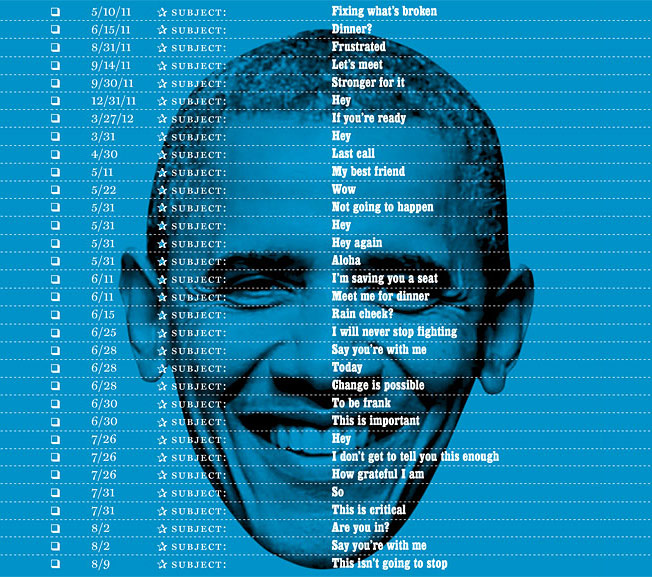
Many marketers praised President Barack Obama’s use of digital marketing to motivate voters and donors. Check out Neil Patel’s email marketing lessons from Obama. The president’s 2012 reelection campaign embraced social media and email marketing with great success.
The Obama campaign’s most-opened subject line simply said “Hey.” The strategy seemed awfully similar to spammy emails to former Daily Show host, Jon Stewart. An interesting fact about the CAN-SPAM Act? Political campaigns are not subject to the anti-spam law.
No, folks in Canada do not call ham Canadian bacon. They do, however, know spam when they see it. Canada’s Anti-Spam Legislation (CASL) went further than CAN-SPAM to curb unsolicited email. As this Cakemail blog points out, Canada’s law requires permission or some sort of action before receiving an email, but CAN-SPAM does not. CASL also applies to text messaging, social media, and other digital communications.

Do you really love email? Have you built a career around it? You might be an email geek. There’s lots of us out there, and the community keeps growing. It all started in 2016 with the founding of the Email Geeks community. If you are in need of some advice or have some to give, you can apply to be part of a Slack channel where tons of discussions around email take place every day.

2016 is also when veteran email marketers Jen Capstraw, April Mullen, and Kristin Bond co-founded the Women of Email professional network to promote female leadership in the industry.
You can read more about Women of Email here on our blog, and you can hear Jen Capstraw talk about the history of email in our webinar with emfluence.

The European Union’s General Data Protection Regulation (GDPR) went into effect in May of 2018. It’s the grandaddy of digital privacy laws, leading to other regulations such as the California Consumer Privacy Act (CCPA).
While GDPR may have caused some headaches for email marketers, it’s also encouraged senders to conduct list building and communication in a way that’s ethical and respects the privacy of consumers.
Convincing people to opt-in (and stay in) is tough to do, especially with all the noise out there. But it’s worth the effort. So is protecting the data and privacy of the people who willingly subscribe to your emails. Transparency, security, and empathy are important if we want email to continue to be an effective channel in the future.
When the COVID-19 pandemic hit, companies large and small were forced to make some major changes. Email often played a big role in helping with communication and digital transformation. From huge corporations that needed to communicate safety procedures during the crisis, to local restaurants that needed a way to stay in business, it all happened in email inboxes. There was also the shift to remote work and students learning from home. Long story short – we all started using our inboxes even more.
According to our research, which was featured in TechRepublic, 55% of senders increased their email volume and 49% said they were emailing customers more often during the initial months of the pandemic and lockdowns. Get more COVID-19 email stats from Sinch Mailjet, and check out our ebook on how they year 2020 changed email forever.
The thing about the history of email is that it keeps on changing. Any email geek who’s been around for a few years knows this to be true. Here are a few of the more recent events impacting the evolution of email marketing:
What’s next for the history of email? Only time will tell. But we’ll be here at Sinch Email on Acid making sure you’re putting your best email forward.
To stay on top of everything that’s going on in the email industry, check out the podcast Email’s Not Dead from Sinch Mailgun. You can also be one of the first to know about the yearly virtual event, Email Camp, when you sign up for updates.